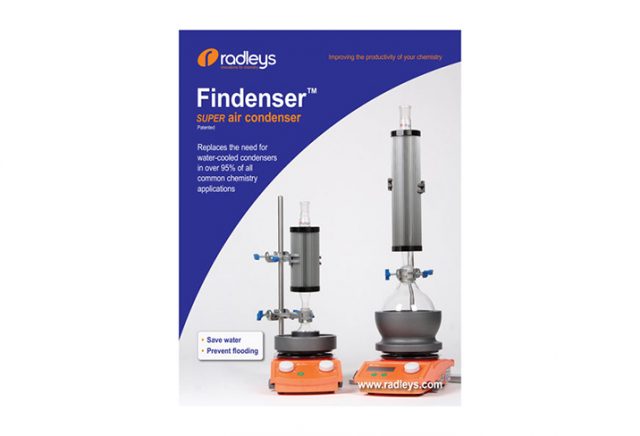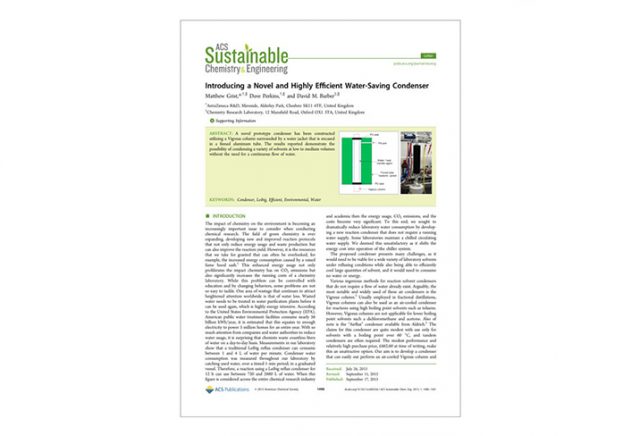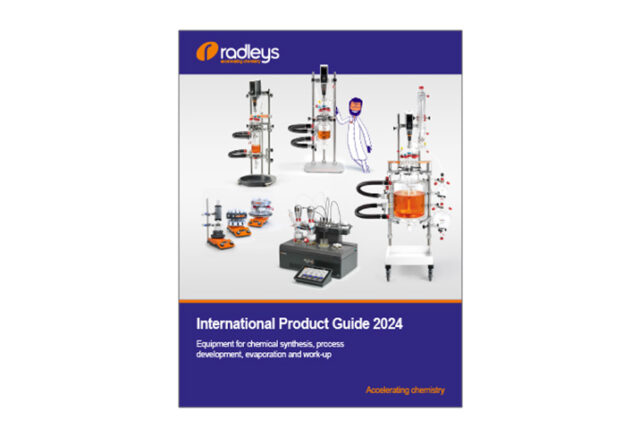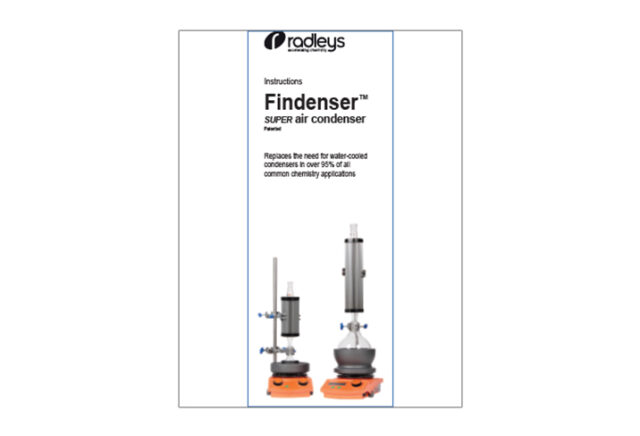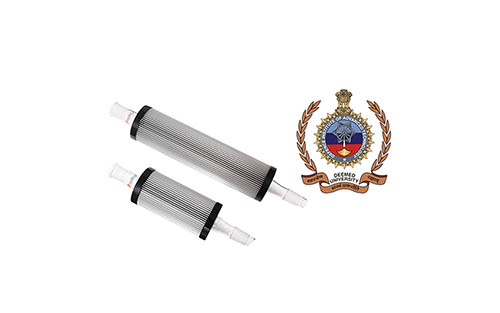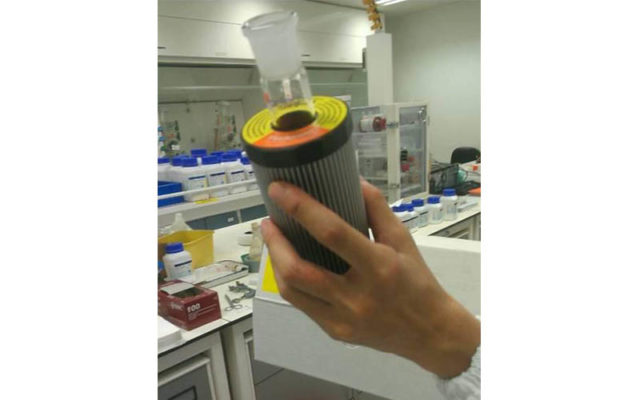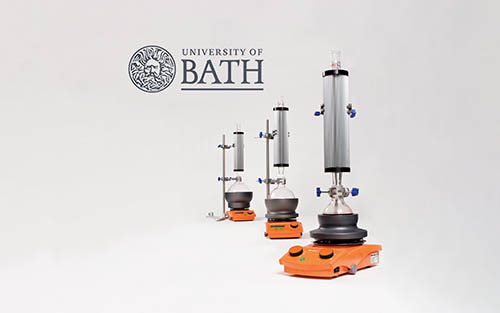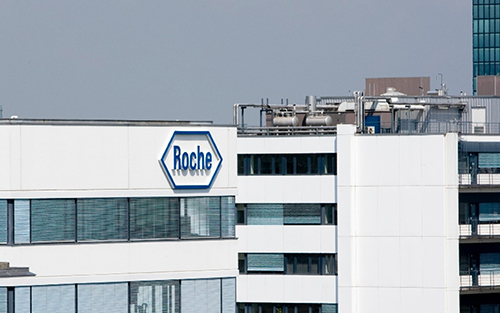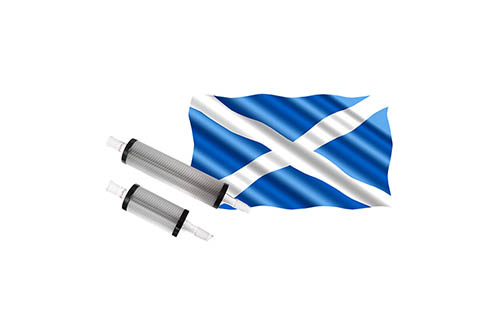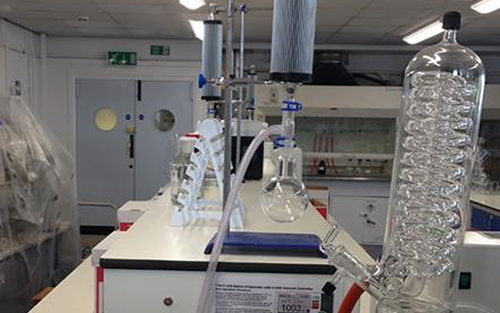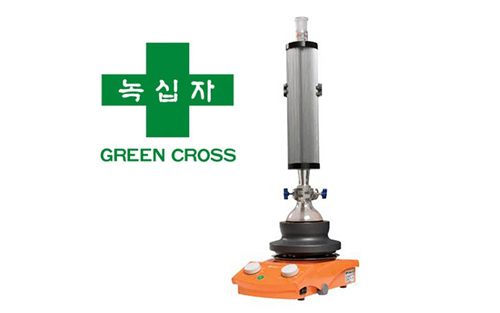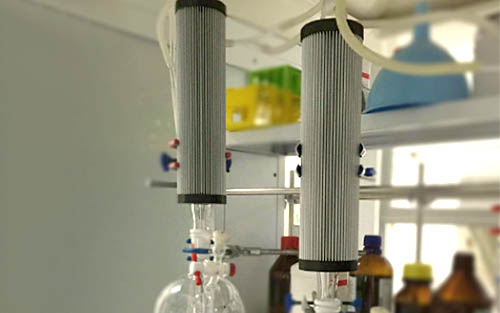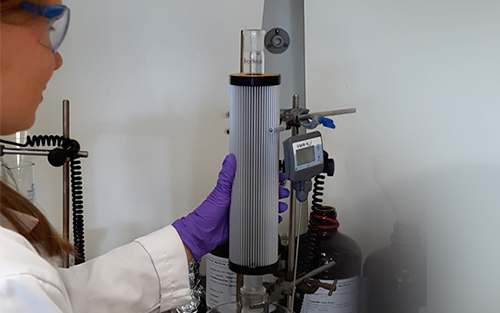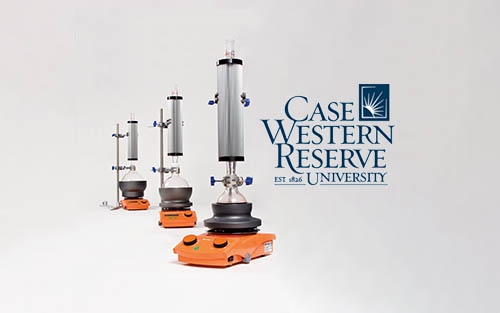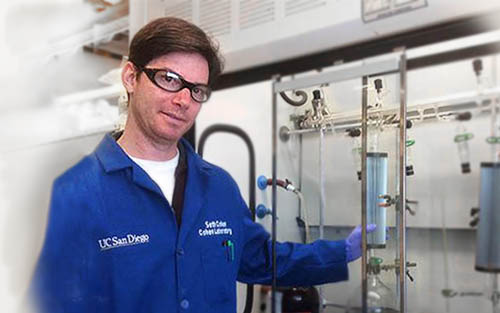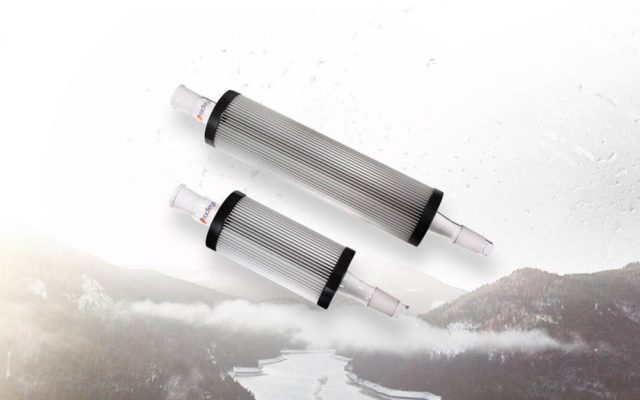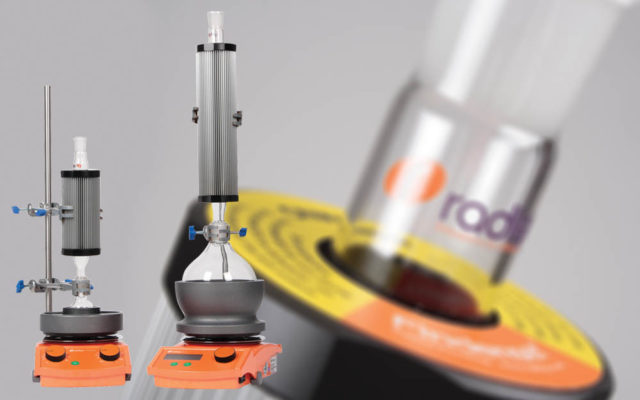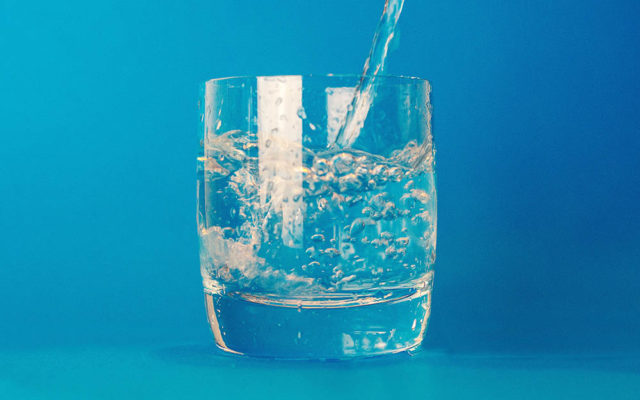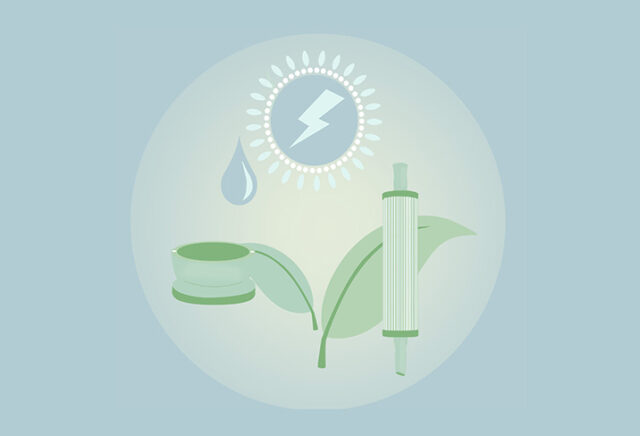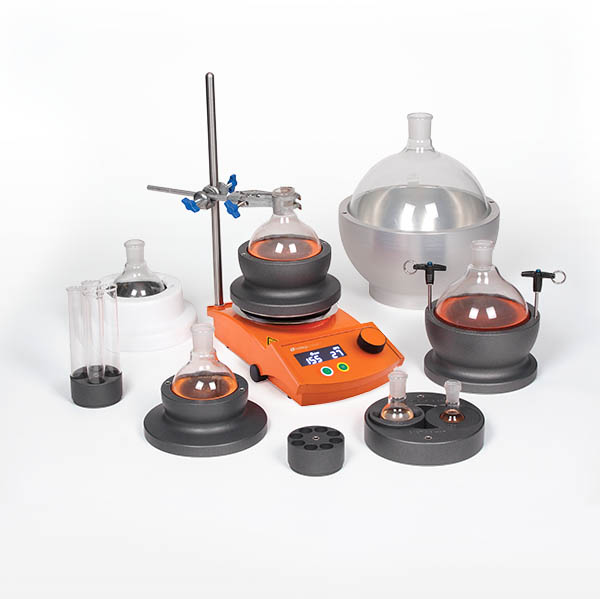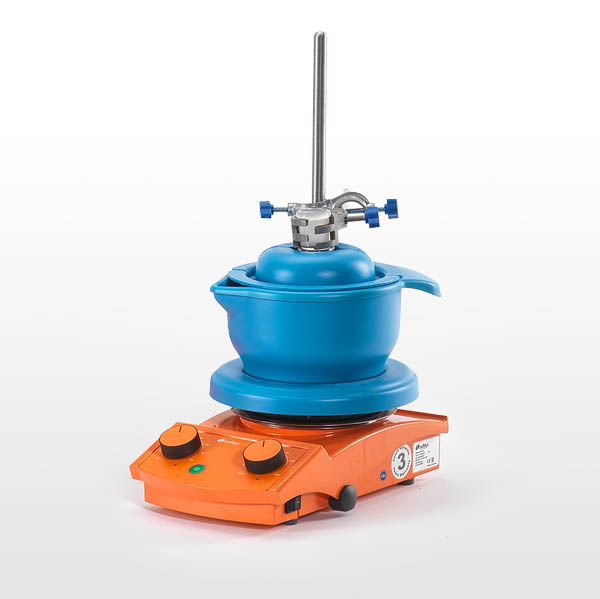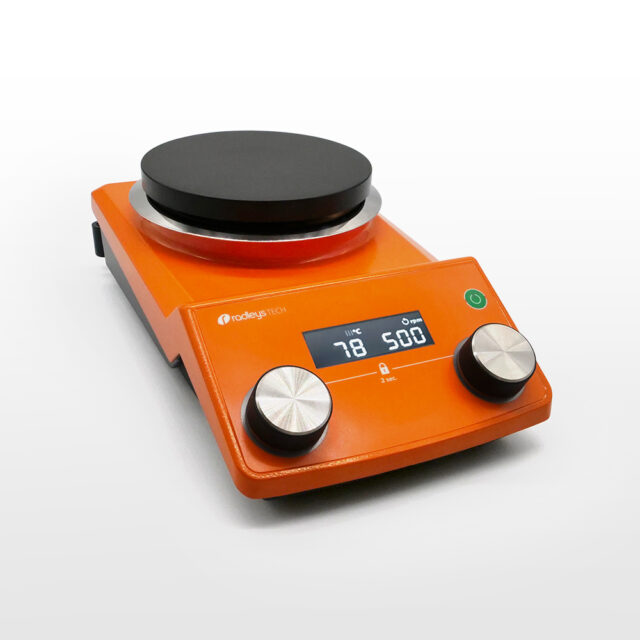For solvent volumes from 5 ml up to 1 litre
Findenser saves water and prevents laboratory flooding

No risk of flooding from running water, unlike a water cooled condenser

Water free condenser eliminates water purchase and disposal costs

Helps meet sustainability and water reduction targets
Findenser benefits
Findenser air condenser – the sustainable condenser alternative to water condensers. Replaces the need for water-cooled reflux condensers in over 95% of all common chemistry applications
No running water required
Findenser comprises of an internal glass condenser and an external, finned aluminium jacket, between which a small amount of water is permanently sealed.
Replace water-cooled condensers
The glass condenser design has a greater internal surface area than traditional air condensers, increasing heat transfer capacity.
Increased heat transfer
Findenser super air condenser is a waterless air condenser: the finned jacket fits around the glass condenser, further increasing the external surface area.
Save water, save money
The result is a ‘SUPER air condenser’! Findenser condenser removes the need for water cooling, giving labs a green option as a glass condenser replacement.
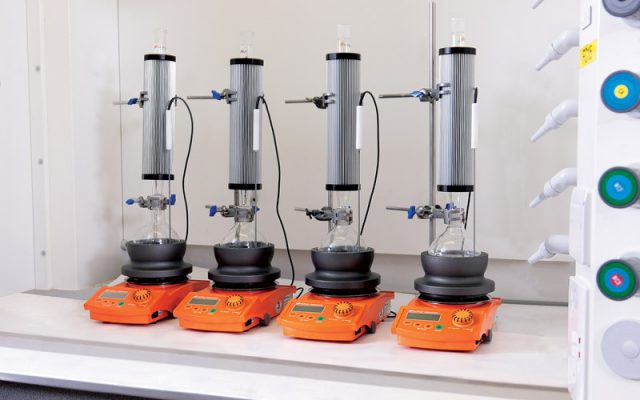
How much water are you wasting?
Water is a precious resource. It makes little economic or environmental sense to waste thousands of litres just to cool a single condenser. Whereas Findenser requires no running water to operate.
Patented design
- Sealed assembly
- Encapsulated thermofluid for maximised thermal conductivity and heat transfer
Choice of flasks
- 10 ml to 2 litre flasks
- Maximum solvent volume 1 litre
Ground glass cone
- Fits standard tapered glass sockets
- Choice of sizes
Finned aluminium jacket
- Excellent thermal conductivity
- High performance air-cooling
- Chemical-resistant anodised surface
Easy clamping
- Use with standard laboratory clamps
- Clamping kits available
Ground glass socket
- Accepts standard tapered cones
- Choice of sizes
Anti-roll design
- Contoured edges prevent rolling when not in use
- Prevents damage to aluminium fins
How much is water costing your lab?
| 1 tap running at 2.5 litres per minute | |||
| The cost running a water condenser | 4 hours | 8 hours | 24 hours |
| Water consumption per day litres | 600 | 1200 | 3600 |
| Cost per Day | £1 | £2 | £6 |
| Cost per Month, 20 working days | £20 | £40 | £120 |
| Cost per Year | £240 | £480 | £1440 |
| Based on a flow of 2.5 litres per minute, at a cost of 0.16p per litre of supply and disposal of water. Price from Veolia Water 2012 commercial pricing. | |||
Findenser return on investment
Compared with a single water condenser, running for just 4 hours a day, Findenser will give you a return on your investment in less than one year.
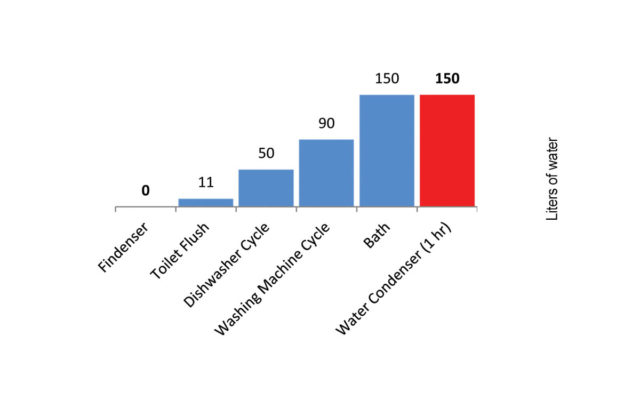
Average water consumption of common household appliances compared with a Findenser and water condenser
Findenser performance testing
A range of solvents, in identical flasks and set-ups, were tested with a Findenser, water condenser and air condenser to record solvent loss by weight.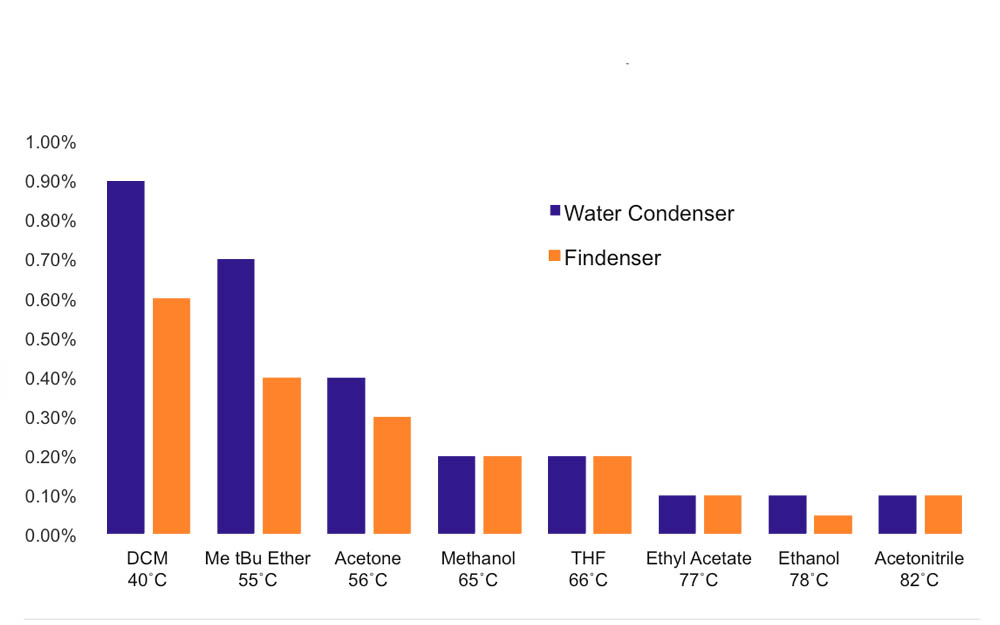
Test conditions: 500 ml solvent in 1000 ml flask for 16 hours, heating 10˚C above boiling point for each solvent.
Compared with an air condenser
- For synthesis with ‘low’ boiling point solvents, Findenser showed a significant improvement in solvent retention.
- With acetone or DCM the reaction boiled dry when using an air condenser, yet Findenser retained 95% of the solvent under the same conditions.
- For synthesis with ‘medium’ boiling point solvents, Findenser delivered improved solvent retention particularly with larger volumes and high temperatures.
Compared with a water condenser
Under identical conditions, Findenser retained solvent to the same level (within the limits of experimental error) as a water condenser with a range of solvents. Diethyl ether is not recommended for use with Findenser.
Findenser not only removed the worry of possible flooding but as it doesn’t need to be close to a water source it freed up space.James Lynch, Centre for Sustainable Chemical Technologies, University of Bath
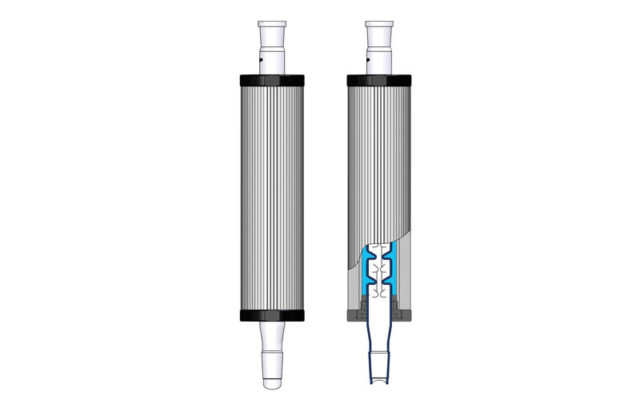
Findenser
- Large size Findenser, 400 mm long.
- Maximum flask size 2 litres, maximum solvent volume 1 litre.
- Choice of 3 joint sizes
- Can be held with conventional laboratory clamps
- Choice of clamping kits available
- Range of PTFE adapters available
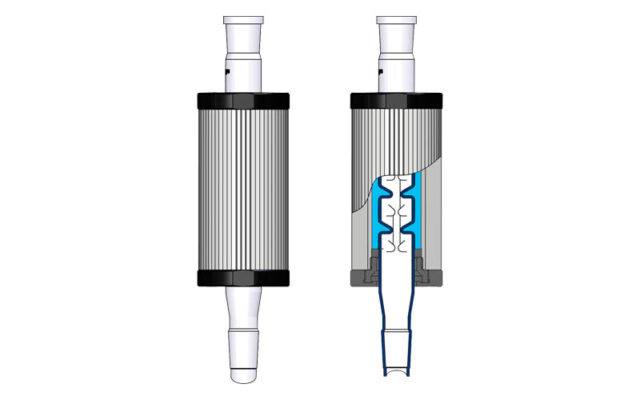
Findenser Mini
- Small size Findenser, 275 mm long.
- Maximum flask size 250 ml, maximum solvent volume 125 ml.
- Choice of 3 joint sizes
- Can be held with conventional laboratory clamps
- Choice of clamping kits available
- Range of PTFE adapters available
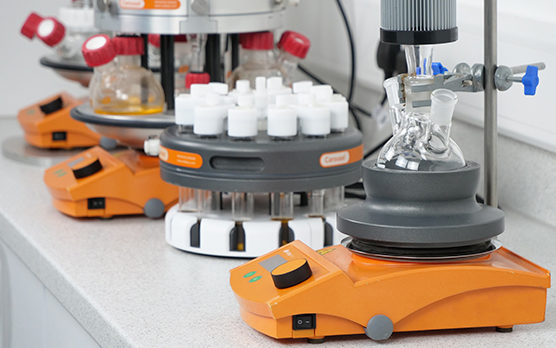
For chemical synthesis, process development, evaporation and work-up
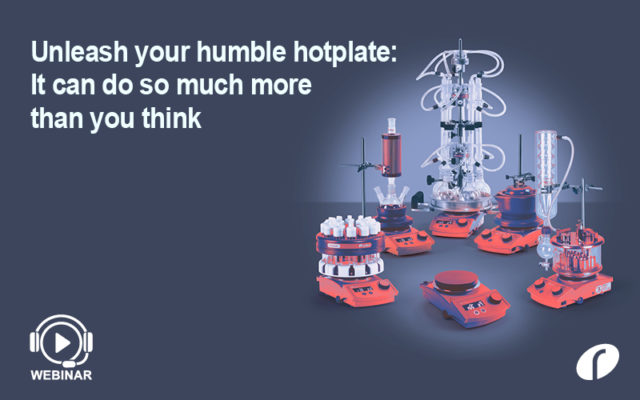
Webinar: Unleash your humble hotplate – it can do so much more than you think
Are you making the most of your hotplate?
Louisa Quegan and Keren Abecassis share their chemistry lab hacks: showing you a range of tools you might not know about.
From 1 position to 45 on a single hotplate – with working volumes between 0.5 ml and 2.5 L. Lou and Keren discuss their personal experience in the lab using traditional methods vs. this range of tools.

Webinar: Why you might be doing your small-scale process development wrong
Are you using round bottom flasks with heating only equipment for your small-scale process development chemistry? Do you find these experiments don’t scale up as well as you would like?
Let’s talk about what’s wrong with this traditional set up and what you can do to improve it.

